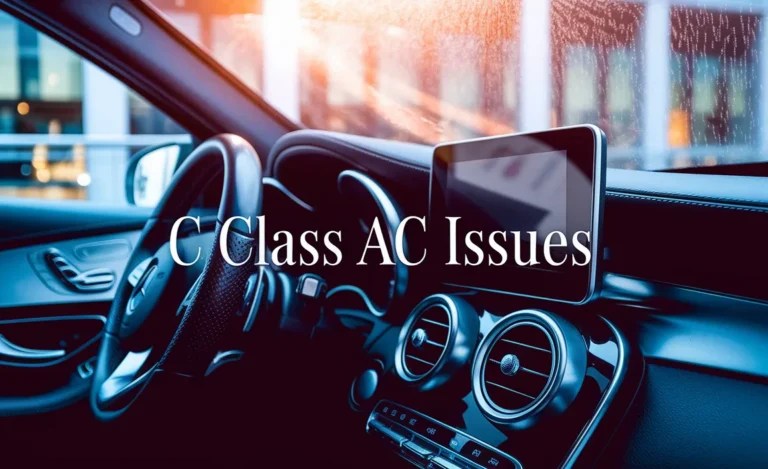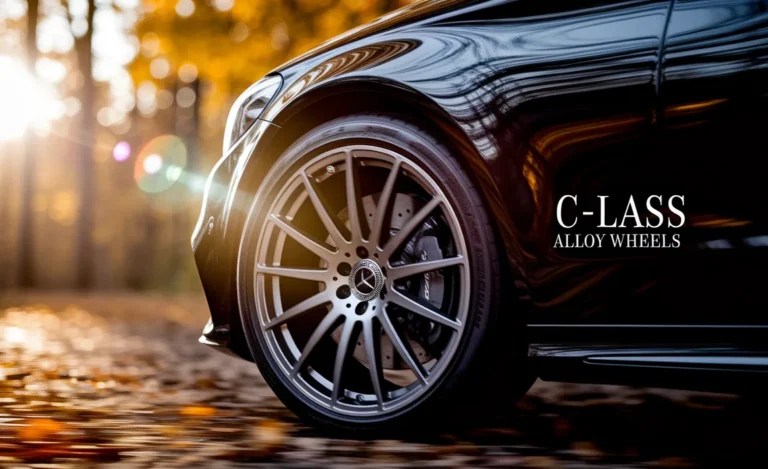Mercedes-Benz C Class Clutch Upgrade: Ultimate Performance, Effortless Drive
Experience Ultimate Performance and an Effortless Drive with a Smarter Clutch Choice.
Is your Mercedes-Benz C-Class clutch feeling a bit tired? Perhaps it’s slipping, making strange noises, or just not responding as crisply as it used to. A worn-out clutch can significantly detract from the refined driving experience your C-Class is known for.
But what if you could not only replace it but actually upgrade it to enhance both performance and daily drivability? This guide is here to demystify the process of a C-Class clutch upgrade, making it attainable for any owner looking for more from their luxury sedan or coupe.
We’ll walk you through why an upgrade might be the perfect solution, what types of clutches are available, and what benefits you can expect. Get ready to transform your drive from ordinary to extraordinary!

Understanding Your Mercedes-Benz C-Class Clutch
Before diving into upgrades, let’s briefly touch upon what your clutch does. In a manual transmission Mercedes-Benz C-Class, the clutch is the crucial component that connects and disconnects the engine from the transmission.
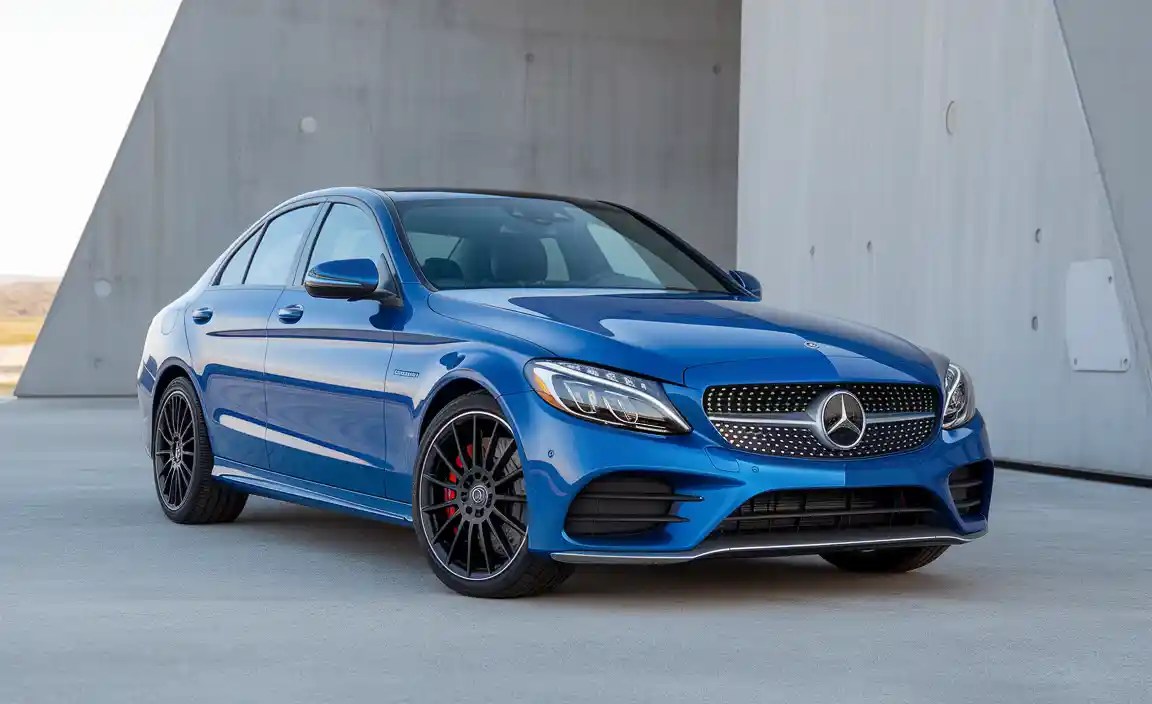
This allows you to smoothly change gears without grinding them. Think of it as the gatekeeper between your engine’s power and your wheels’ movement. Over time, the clutch’s friction material wears down, similar to brake pads. This wear can lead to symptoms like:
- Clutch Slipping: The engine revs up, but your speed doesn’t increase proportionally.
- Difficulty Shifting: Gears feel stiff, notchy, or impossible to engage.
- Burning Smell: A distinct acrid smell often indicates excessive friction.
- Pedal Issues: The clutch pedal might feel too soft, too stiff, or grab too high or low.
While a standard replacement will restore functionality, a C-Class clutch upgrade aims to do more. It’s about choosing components that offer enhanced engagement, better heat dissipation, longer lifespan, and in some cases, improved performance characteristics suitable for spirited driving or even track use.
Why Consider a C Class Clutch Upgrade?
Upgrading your C-Class clutch isn’t just about fixing a problem; it’s about embracing opportunity. For many Mercedes-Benz owners, especially those with manual transmission models, the desire for a more engaging and responsive driving experience is strong. A clutch upgrade can deliver:
- Enhanced Performance: A performance clutch can handle more torque and higher engine RPMs, crucial for tuned C-Class models or those driven aggressively.
- Improved Drivability: Many aftermarket clutches offer a firmer, more predictable pedal feel and quicker engagement, making city driving and spirited maneuvers more precise.
- Increased Durability: Performance clutches often use higher-quality materials designed to withstand more abuse and heat than stock units, leading to a longer service life.
- Reduced Clutch Fade: During demanding driving, like track days or aggressive mountain passes, standard clutches can overheat and “fade,” losing their grip. An upgraded clutch resists this.
- Direct Feel: Some upgrades aim for a more direct connection between the engine and transmission, providing more feedback to the driver.
Types of C Class Clutch Upgrades
The world of clutch upgrades offers various options, each with its own set of characteristics. When considering a C-Class clutch upgrade, you’ll typically encounter these types:
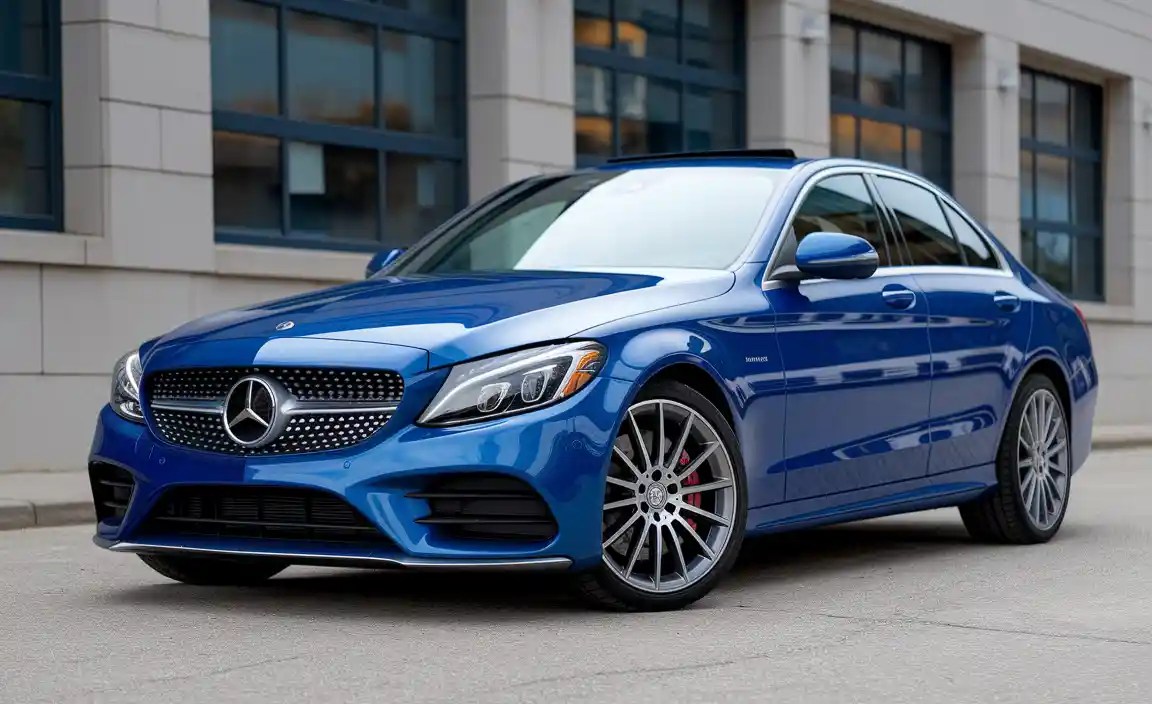
1. High-Performance Organic Clutches
These are a popular choice for a mild to moderate upgrade. They use an organic friction material that’s more robust than stock, offering better heat resistance and torque capacity. The pedal feel is usually very close to stock, making them ideal for daily driving while providing a noticeable improvement in engagement and longevity.
2. Multi-Plate Clutches
For extreme performance applications, multi-plate clutches are the way to go. These use multiple friction discs instead of a single one. This significantly increases the surface area for engagement, allowing for massive torque handling and extremely quick shifts. However, they tend to have a heavier pedal feel and can be less street-friendly due to their aggressive engagement characteristics. These are more common in heavily modified AMG models or dedicated track cars.
3. Ceramic/Puck Clutches
These clutches use rigid ceramic buttons or pucks for extreme grip and heat resistance. They are built to handle immense power and abuse. The downside is a very abrupt engagement, making them challenging for smooth daily driving. They often require a dual-mass flywheel upgrade or a performance single-mass flywheel. This is a serious performance upgrade, often not ideal for a typical luxury C-Class experience.
4. Upgraded Pressure Plates and Release Bearings
Often, an upgrade doesn’t just involve the friction disc. A reinforced or performance pressure plate can provide more clamping force, ensuring the clutch disc stays firmly against the flywheel for better grip. A high-quality, heavy-duty release bearing (or throw-out bearing) is also essential for smooth operation and longevity, especially when paired with a stronger pressure plate.
Choosing the Right Upgrade for Your C-Class
The “ultimate performance, effortless drive” balance depends heavily on your specific C-Class model, intended use, and personal preferences. Here a breakdown to help you decide:
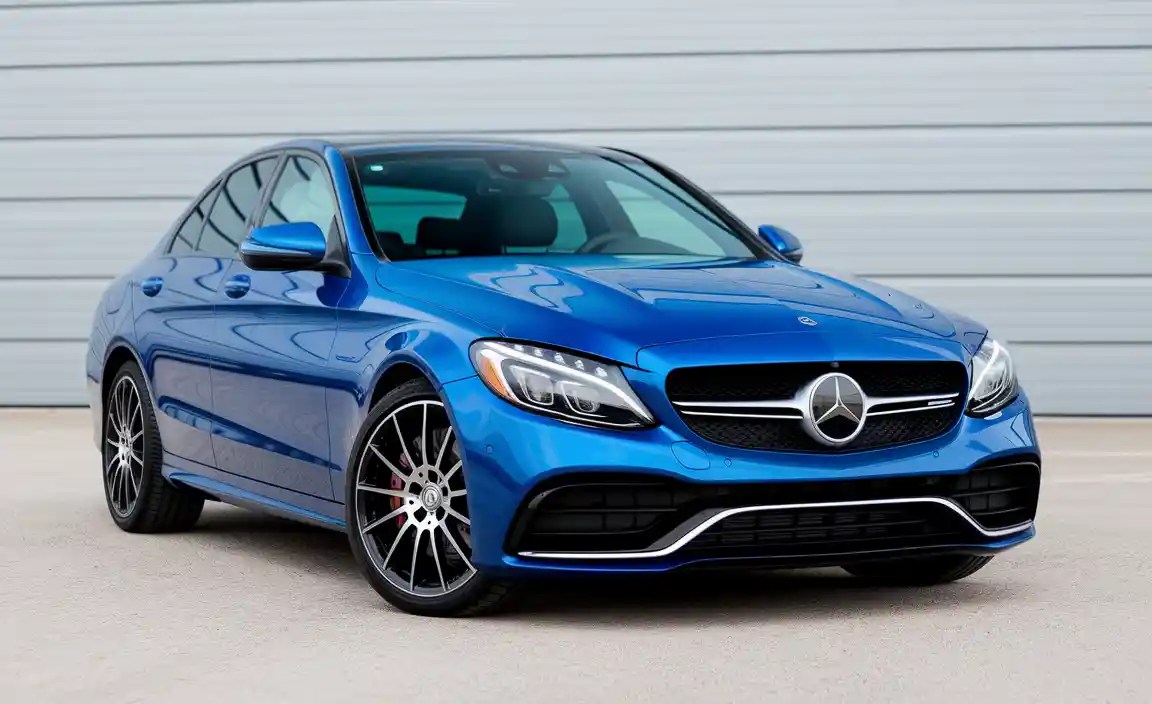
Factors to Consider:
- Your C-Class Model and Engine: A C300 will have different needs than a C63 AMG. Higher horsepower and torque engines require clutches that can handle the increased load.
- Driving Style: Are you a daily commuter, a weekend warrior enjoying spirited drives, or an occasional track day enthusiast?
- Transmission Type: This guide primarily focuses on manual transmissions, as automatics have different systems (like torque converters) that are upgraded differently.
- Budget: Clutch upgrades can range from a few hundred to several thousand dollars, depending on the type and brand.
- Other Modifications: If you’ve already tuned your engine or plan to, ensure your clutch can handle the increased power output.
Recommended Scenarios:
- Daily Driver Seeking Better Feel: A high-performance organic clutch with an upgraded pressure plate is often the sweet spot. It offers better durability and a more positive engagement without sacrificing comfort.
- Enthusiast with Moderate Power Increase: A performance organic clutch with a slightly heavier-duty pressure plate.
- Track-Focused C-Class or High-Torque Tuning: A performance multi-plate clutch or a robust single-plate ceramic clutch might be considered, but be prepared for a less comfortable daily commute.
Key Components of a Clutch Upgrade Kit
A comprehensive C-Class clutch upgrade will typically include several key components. It’s often best to replace these parts concurrently to ensure optimal performance and longevity. A typical kit might include:
- Clutch Disc: The friction material component that engages with the flywheel and pressure plate.
- Pressure Plate: The part that clamps the clutch disc against the flywheel.
- Release Bearing (Throw-Out Bearing): Actuates the clutch fork, disengaging the clutch.
- Pilot Bearing/Bushing: A small bearing that supports the transmission input shaft.
- Alignment Tool: Crucial for correctly centering the clutch disc during installation.
Optional but often Recommended:
- Flywheel: You might upgrade to a lighter flywheel for quicker engine response, or a more robust single-mass flywheel if you’re switching from a dual-mass unit. A new dual-mass flywheel is also an option if the original is worn.
- Clutch Master and Slave Cylinders: If your hydraulic system is aging, replacing these can improve pedal feel and engagement.
The C Class Clutch Upgrade Process: A High-Level Overview
Performing a clutch replacement and upgrade is a significant undertaking requiring specialized tools and mechanical knowledge. If you’re not an experienced DIY mechanic, it’s highly recommended to have this done by a professional Mercedes-Benz specialist. However, understanding the process can empower you during discussions with your mechanic.
Tools and Equipment You’ll Likely Need:
- Jack and jack stands (heavy-duty)
- Transmission jack
- Socket set and wrenches (metric)
- Torque wrench
- Pry bars
- Screwdrivers
- Clutch alignment tool
- Fluid drain pan and new transmission fluid
- Shop towels and brake cleaner
- Safety glasses and gloves
- Service manual specific to your C-Class model
- Potentially tools for bleeding the clutch hydraulic system
General Steps Involved:
- Preparation: Ensure the vehicle is safely elevated on jack stands. Disconnect the battery.
- Access the Transmission: This typically involves removing various components such as the exhaust system, driveshaft, shifter linkage, starter motor, and sometimes crossmembers to gain access to the transmission bell housing.
- Remove the Transmission: Support the engine with a block of wood or an engine support tool. Use a transmission jack to carefully lower and remove the transmission from the vehicle. This is often the heaviest and most critical part of the process.
- Remove the Old Clutch: Unbolt the pressure plate from the flywheel. The components (flywheel, clutch disc, pressure plate) will now be exposed. Mark the flywheel and pressure plate orientation if reusing the flywheel.
- Install New Components:
- Inspect the flywheel for wear or damage. Resurfacing or replacing it might be necessary.
- Using the alignment tool, center the new clutch disc against the flywheel.
- Bolt on the new pressure plate, tightening the bolts in a star pattern to the manufacturer’s specified torque.
- Remove the alignment tool.
- Replace the release bearing on the transmission input shaft and the pilot bearing/bushing in the crankshaft.
- Reinstall the Transmission: Carefully maneuver the transmission back into place, aligning the input shaft with the clutch disc splines. This can be a delicate process.
- Reassemble: Reinstall all components that were removed, ensuring all bolts are torqued correctly.
- Replace Fluids: Refill the transmission with the correct type and amount of transmission fluid specified for your C-Class.
- Bleed the Clutch Hydraulics: If the clutch hydraulic system was disturbed, it will need to be bled to remove air bubbles and restore proper pedal feel.
- Test Drive: Start the engine and carefully test clutch engagement and gear shifting. Gradually increase driving intensity.
For a detailed, model-specific guide, consult your Mercedes-Benz C-Class service manual or refer to reputable automotive repair databases such as ALLDATA or Mitchell 1, which provide comprehensive repair procedures and specifications.
Performance Benefits Table: Stock vs. Upgraded Clutch
Understanding the quantifiable benefits can help solidify your decision. Here’s a comparative look at what you might experience:

| Feature | Stock Clutch | Performance Organic Upgrade | Performance Multi-Plate/Ceramic Upgrade |
|---|---|---|---|
| Torque Capacity | Standard (Engine-specific) | +15-30% | +50-100%+ |
| Heat Dissipation | Moderate | Good | Excellent |
| Engagement Feel | Soft, comfortable | Firmer, more positive | Sharp, aggressive, direct |
| Pedal Effort | Light | Slightly increased | Significantly increased |
| Lifespan (Street Use) | Good | Very Good to Excellent | Moderate (can be shorter with aggressive driving) |
| Street Comfort | High | High | Low to Moderate |
| Best For | General driving | Enthusiast daily driving, moderate tuning | Track use, high-horsepower builds |
Maintaining Your Upgraded Clutch
Once your C-Class boasts a new, upgraded clutch, proper care will ensure it delivers its promised benefits for years to come. Here are some tips:
- Avoid “Riding” the Clutch: This means resting your foot on the clutch pedal while driving. It puts unnecessary pressure on the release bearing and can cause premature wear.
- Smooth Gear Changes: While performance clutches can handle aggressive shifts, consistent smooth operation will extend their life.
- Proper Engagement: Ensure you fully engage the clutch before accelerating and fully disengage it when stopping, especially important with firmer engagement clutches.
- Listen and Feel: Pay attention to any new noises or changes in pedal feel. Early detection of issues can prevent catastrophic failures.
- Regular Inspections: During routine maintenance, have your mechanic check the clutch system for leaks, wear, and proper adjustment.
- Understand the Limits: Even an upgraded clutch has limits. Pushing it beyond its rated capacity will lead to premature failure.
Conclusion: Reawaken Your C-Class Driving Experience
Upgrading the clutch in your Mercedes-Benz C-Class is more than just a repair; it’s an opportunity to enhance the very essence of what makes driving a Mercedes-Benz special. Whether you’re looking to restore the crispness of a new car feel, prepare your vehicle for increased performance tuning, or simply desire a more connected and engaging driving experience, a well-chosen clutch upgrade can deliver.
By understanding the different types of clutches available, considering your specific C-Class model and how you drive it, and working with a trusted professional for installation, you can achieve that perfect balance of “ultimate performance” and “effortless drive.” Don’t let a worn clutch hold you back – embrace the potential for a more exhilarating and responsive journey behind the wheel of your Mercedes-Benz.
FAQs
Q1: How long does a clutch upgrade typically last on a Mercedes-Benz C-Class?
A: The lifespan varies greatly depending on the type of upgrade, your driving habits, and the specific C-Class model. A high-performance organic clutch can last as long as, or even longer than, a stock clutch if driven reasonably, often 60,000-100,000 miles or more. More aggressive ceramic or multi-plate clutches used for track work may have shorter lifespans on the street due to their demanding nature.
Q2: Can I upgrade my C-Class clutch myself?
A: While it’s possible for experienced DIY mechanics with the right tools, it’s a complex and labor-intensive job. It requires specialized equipment like a transmission jack and a good understanding of torque specifications. For most owners, professional installation by a qualified Mercedes-Benz mechanic is recommended to ensure proper fitment and avoid damage.
Q3: Will a clutch upgrade affect fuel economy?
A: Generally, a well-chosen performance organic clutch designed for daily use will have a minimal impact on fuel economy. However, extremely aggressive clutches (like ceramic puck styles) or changes to the flywheel (e.g., lighter flywheel) might slightly affect it, especially if combined with a more aggressive driving style they encourage.
Q4: What are the signs that my C-Class clutch needs to be replaced or upgraded?
A: Common signs include a slipping clutch (engine revs but car doesn’t accelerate proportionally), difficulty shifting gears, a burnt smell, or unusual noises when the clutch pedal is pressed or released.
Q5: Should I upgrade my flywheel when upgrading the clutch?
A: It’s highly recommended. Often, the flywheel needs resurfacing or replacement during a clutch job. If you’re upgrading the clutch significantly, consider a lighter flywheel for better engine response or a stronger single-mass flywheel if the original dual-mass setup is problematic or being replaced for a more robust feel.
Q6: Are there specific brands known for C Class clutch upgrades?
A: Yes, reputable brands in the performance clutch market include ACT (Advanced Clutch Technology), Exedy, South Bend Clutch, and SPEC Clutch. For Mercedes-Benz specific applications, consult with specialists who can recommend options tailored to your C-Class model and performance goals.
Q7: Can a clutch upgrade improve my C-Class’s acceleration?
A: A stronger clutch itself doesn’t directly increase acceleration. However, it allows your engine to transfer more power to the drivetrain without slipping, which is crucial if your C-Class is tuned for more power. A lighter flywheel can improve acceleration by reducing rotational mass. The “improved feel” can also make you feel like you’re accelerating faster.

